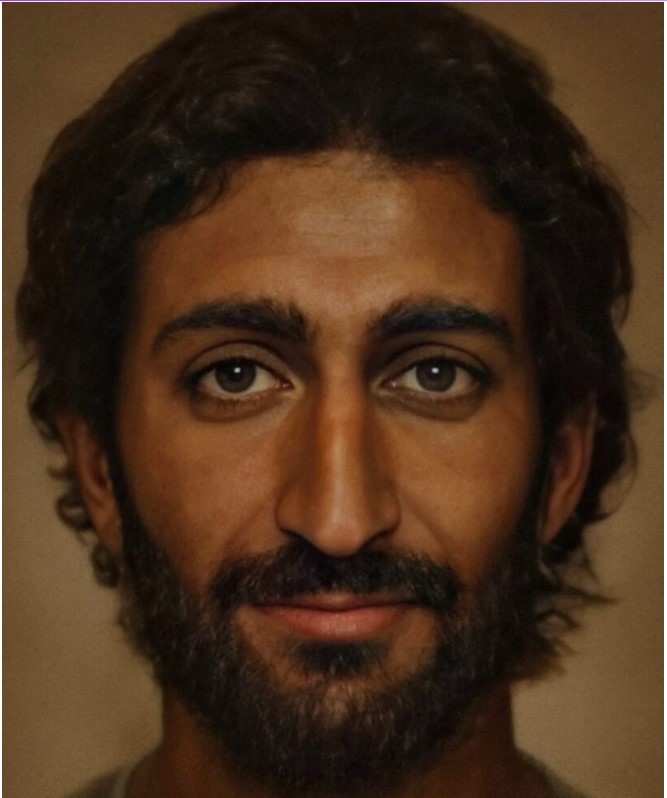After two millennia, the true face of Jesus has been unveiled, challenging the traditional image popularized by the Catholic Church. Historically depicted as a white, European figure with blue eyes, scholars now believe Jesus’ true appearance diverged from Renaissance portrayals.
Dutch photographer and digital artist Bas Uterwijk embarked on a mission to create an authentic image of Jesus using advanced technology. Employing Artbreeder’s machine-learning techniques, Bas aimed to capture the historical context of Jesus’ origins.
The resulting image defied conventional perceptions of Jesus, showing a Middle Eastern man with shorter stature, muscular build, and coiling black hair. Bas used AI software to merge various facial references, creating a synthesized image that incorporated aesthetic preferences.
Bas meticulously adjusted details like hair and beard lengths to reflect the era’s norms, combining Byzantine and Renaissance artistic traditions. The outcome was an aesthetic interpretation rather than an exact scientific representation of Jesus’ appearance.
Born in Bethlehem in 4 BC and raised in Nazareth, Jesus had olive-toned skin, dark hair, and brown eyes, according to historical records. Contrary to popular images, he likely had shorter hair and a beard, rather than flowing locks and robes.
Joan Taylor, an expert on Christian origins, emphasized Jesus’ humble existence and itinerant lifestyle. Records suggested he lived without a permanent home, reflecting a wandering, scruffy appearance.
Richard Neave, a facial reconstruction specialist, further supported this notion, envisioning a stocky, olive-skinned Judean man from the first century. Neave’s reconstruction showcased Jesus as a figure who transcended geographical boundaries.
This project underscores the complexity of Jesus’ appearance and invites discussions on historical accuracy. It challenges long-held beliefs and prompts a reevaluation of iconic depictions. By sharing these insights, the aim is to spark conversations about the multifaceted nature of the cherished figure, encouraging a deeper understanding of his historical context.


